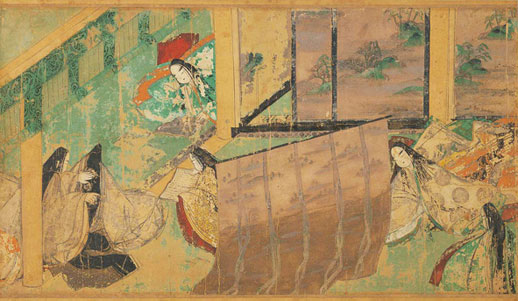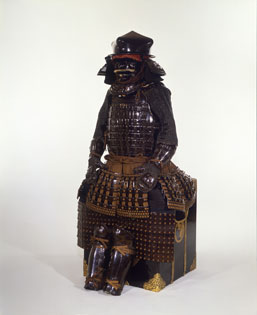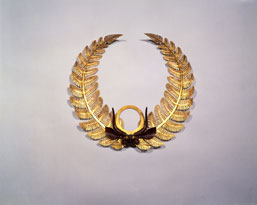What a Legacy to Leave
It is difficult at times to imagine Japan dwelling on its past. Extravagant and ambitious pieces of architecture would have us all believe that history is literally a thing of the past. Yet in all of the museums and exhibitions I have ever stepped into, none have astounded me as much as Tokyo National Museum’s exhibition of artefacts from the Tokugawa Dynasty. What was forseen as a peaceful Sunday morning in a half empty museum turned out to be a morass of visitors pushing and shoving their way through the galleries. So, what were they trying to get a gander at?

The accompanying information lists 308 pieces in total, ranging from Tissue pouches to medicine jars to Katana swords, all of which were directly used, worn, owned or linked to the Tokugawa shoguns. This impressive collection was divided into three sections: “The Shoguns’ Authority”, “Beauty and Status” and “Elegance of the Princesses”. The first section appeared to present the initial face of the Tokugawa regime: strength and craft in its tactics, armoury and weaponry. Here was the suit of armour worn by Ieyasu Tokugawa himself at the Battle of Sekigahara in 1600 as well as other fine examples of armoury, some still bearing bullet marks where the metal was likely tested for strength. Equally of interest were the matchlock pistols bearing the Tokugawa seal. Matchlocks had been introduced by the Portuguese some 50 years earlier and these particular examples, so elegantly crafted by Noda Kiyotaka, put to shame their European equivalents.

Foreign influences resonate strongly in the first and second sections, hinting at Ieyasu’s curiosity towards the outside world. A couple of suits of armour clearly showed a European influence, one sporting a pigeon-breasted chest plate and another a pointed cone helmet. Various gifts given to the Shoguns from Europe were also displayed prominently, including a clock that the King of Spain presented to Ieyasu in 1611 as a reward for a sea rescue by the Japanese. Other items of note were a telescope, a compass and a pencil, as well as a Dutch outfit (presumably undergarments) and European stockings (the exact country wasn’t specified). The Christian presence of which Ieyasu was so weary was evident in an early Japanese translation of the Ten Commandments as well as a European statue of Christ. If there was anything disappointing here, it was the absence of anything related to William Adams who was well known to be close to Ieyasu as an advisor and navigator, although perhaps this had been overlooked in the translations, which in this exhibition are sparse and reserved only for the more significant parts of the displays. The second section, “Beauty and Status” showed many painted scrolls and exemplary pieces of calligraphy, including also chapters from the illustrated Tale of Genji, dated back to the 12th Century. A Chinese influence was also notable amongst the tea utensils and calligraphy hinting at the profound respect for the cultural skills of its largest neighbor.

The third section focused on the women of the dynasty. It was eventually customary for the Shogun to marry women of high nobility in Kyoto including the imperial family, which meant that the Tokugawa could maintain a genetic footing above ambitious Daimyo. These ladies lived their lives in cocooned beauty and luxury and many of their possessions will undoubtedly interest the ladies of the audience and perhaps even the gentlemen too.
Other items that can be viewed are several kimonos, Noh masks, banners and important documents including a document pertaining to the resignation of Tokugawa Yoshinobu in 1867. It is however unfortunate that in order to see these precious items, some of which are designated as “important cultural property”, one has to shuffle like a penguin anti-clockwise around the room, allowing you only a few moments to read the accompanying texts or admire the artefacts themselves before being pushed on around the course. As amazing as it is to see so many Japanese people come to this museum to appreciate their own history, it is perhaps a too painful a reminder of the rush hour trains in the morning. One clever visitor had clearly had this experience before and came prepared: equipped with a pair of binoculars, he was able to read the texts from afar without having to be shuffled along.
With all the contemporary art museums in Tokyo, and indeed the rest of the world, trying to promote culture, it is hugely heart-warming to see hundreds of normal people come to a museum simply to bear witness to artefacts of their own history. No pretentiousness, no concepts, no trickery, simply the past of what makes Japan what it really is today: deeply-rooted in its history but never doing anything more than paying respect to it.
Gary McLeod
Gary McLeod



